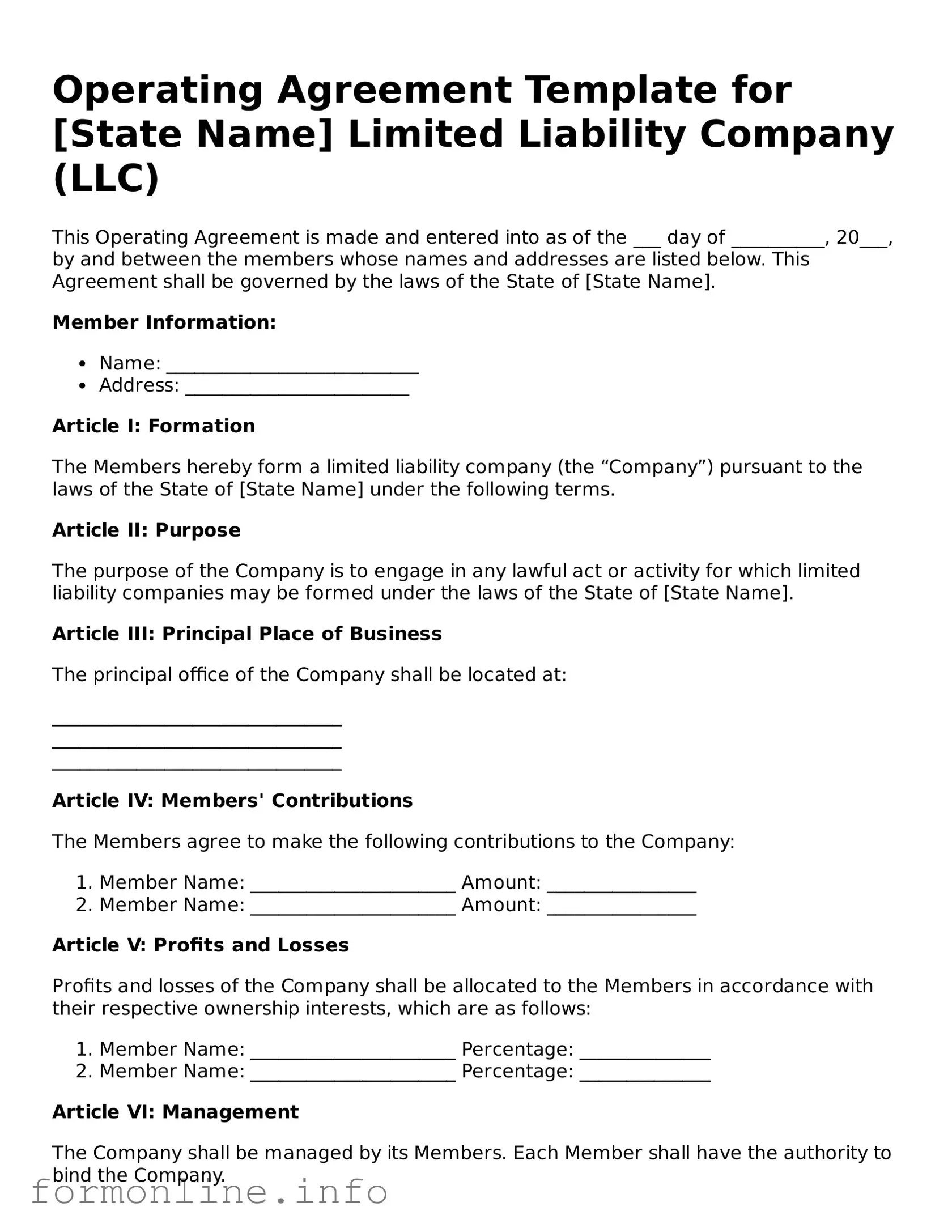An Operating Agreement is often compared to a Partnership Agreement. Both documents outline the roles, responsibilities, and profit-sharing arrangements among business partners. While a Partnership Agreement is specifically for partnerships, an Operating Agreement serves a similar purpose for limited liability companies (LLCs). Each document provides clarity on how decisions are made and how disputes are resolved, ensuring that all parties understand their rights and obligations.
Understanding the importance of a comprehensive Last Will and Testament is crucial for anyone looking to ensure their assets are distributed according to their wishes. This legal document not only clarifies the intended distribution of property but also provides a sense of peace during a time of loss, allowing individuals to express their final wishes clearly and effectively.
A Shareholders' Agreement is another document similar to an Operating Agreement. This agreement is used by corporations to define the relationship between shareholders. It covers aspects such as voting rights, dividend distribution, and the process for selling shares. Like an Operating Agreement, it aims to protect the interests of the parties involved and establish a framework for governance, albeit in a corporate context.
The Bylaws of a corporation also share similarities with an Operating Agreement. Bylaws govern the internal management of a corporation, detailing the roles of directors and officers, meeting protocols, and voting procedures. While an Operating Agreement focuses on LLCs, both documents serve to provide structure and clarity in decision-making processes and operational guidelines.
A Joint Venture Agreement resembles an Operating Agreement in that it outlines the terms of collaboration between two or more parties for a specific project or business activity. This document details contributions, profit-sharing, and responsibilities, similar to how an Operating Agreement specifies the roles and financial arrangements among LLC members. Both documents are essential for ensuring that all parties are aligned in their objectives and operations.
A Limited Partnership Agreement is another document that parallels an Operating Agreement. This agreement is specific to limited partnerships and defines the roles of general and limited partners. It outlines profit distribution, management responsibilities, and the extent of liability for each partner. Like an Operating Agreement, it aims to establish clear expectations and protect the interests of all parties involved.
An Employment Agreement can also be likened to an Operating Agreement, particularly in its role of defining relationships and expectations. While an Operating Agreement addresses the relationship among business owners, an Employment Agreement focuses on the employer-employee dynamic. Both documents clarify roles, responsibilities, and compensation, ensuring that all parties understand their commitments and rights.
A Non-Disclosure Agreement (NDA) shares some similarities with an Operating Agreement in terms of protecting sensitive information. While an Operating Agreement outlines the operational framework of a business, an NDA ensures that confidential information remains protected among members or partners. Both documents are essential for maintaining trust and safeguarding proprietary information within a business context.
A Franchise Agreement can be compared to an Operating Agreement as both outline the terms of a business relationship. In a franchise, the franchisor and franchisee establish the operational guidelines, fees, and support structures. Similarly, an Operating Agreement sets forth the operational rules for an LLC. Both documents are vital for ensuring that all parties understand their roles and responsibilities within the business framework.
A Membership Agreement is similar to an Operating Agreement, particularly in organizations that operate as membership-based entities. This document outlines the rights and responsibilities of members, including voting rights and membership fees. Like an Operating Agreement, it serves to clarify expectations and establish governance structures among members, ensuring smooth operations and decision-making.
Finally, a Service Agreement can be likened to an Operating Agreement in that it defines the terms of a service relationship. While an Operating Agreement focuses on the internal workings of a business entity, a Service Agreement outlines the expectations between a service provider and a client. Both documents are crucial for clarifying roles, responsibilities, and compensation, helping to prevent misunderstandings and disputes.
